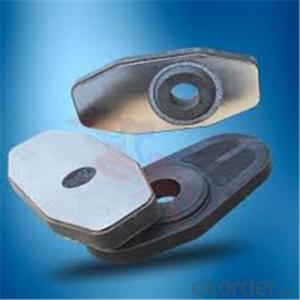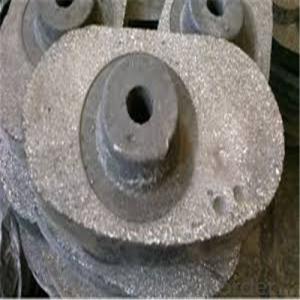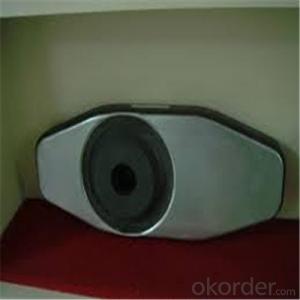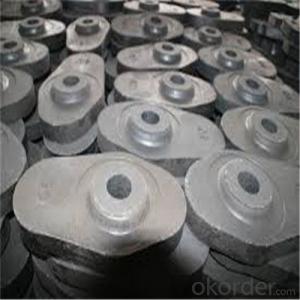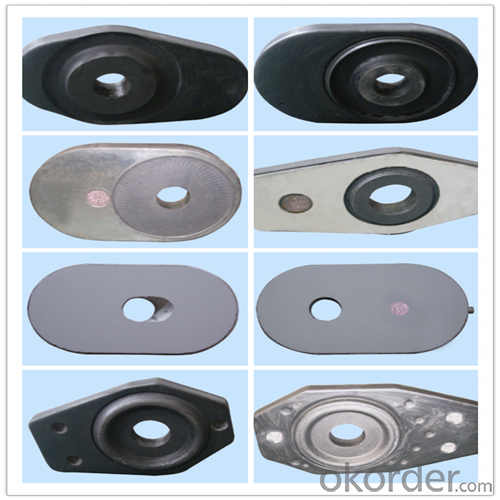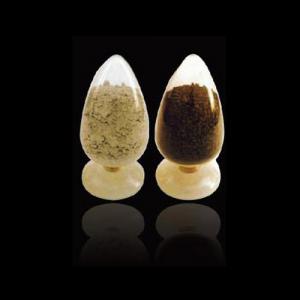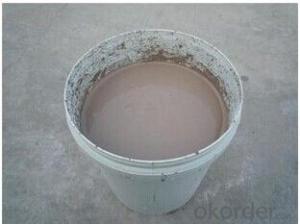High Performance Ladle Sliding Gate for Steel Industry 2015
- Loading Port:
- Shanghai
- Payment Terms:
- TT OR LC
- Min Order Qty:
- 100 pc
- Supply Capability:
- 1000 pc/month
OKorder Service Pledge
OKorder Financial Service
You Might Also Like
Quick Details for High Performance Refractory Ladle Slide Gate
| Place of Origin: | China (Mainland) | Shape: | Plate | Material: | Alumina Block |
| SiO2 Content (%): | N/A | Al2O3 Content (%): | 80-90% | MgO Content (%): | N/A |
| CaO Content (%): | N/A | Refractoriness (Degree): | 1770°< Refractoriness< 2000° | CrO Content (%): | N/A |
| SiC Content (%): | N/A | Model Number: | CS80 | Brand Name: | |
| Product name: | High performance refractory ladle slide gate | Model No.: | cs80 | Brand name: | CMAX |
| Quality: | Al-C or Al-Zr-C | Service life: | 4-6 heats | Apparent porosity: | 7% Max |
| Bulk density:: | 3.1 MIN | C.C.S: | 120MPA | MOQ: | 100 pcs for trial |
| Delivery time: | 60 working days upon receipt of deposit |
Packaging & Delivery
| Packaging Details: | Inner carton packing, outer wooden case suitable for long term sea shipping |
| Delivery Detail: | three months working days upon receipt of deposit |
Specifications
Surface flatness less than 0.05mm
High mechanical strength
Erosion resistance
Oxidation resistance
Thermal shock stability
General Chemical Analysis for refractory ladle slide gate :
slide gate plate widely including Alumina carbon and Alumina Zirconia Carbon slide gate plate, MgO and MgO-spinel slide gate plate,nonoxides bonding slide gate plateand unburned slide gate plate.
Alumina -Zirconia-Carbon material
| Al-Zr-C Material | |||||
| Al2O3 | C | ZrO2 | Apparent porosity | Bulk density | C.C.S |
| (% minm) | (% minm) | (% minm) | (% max) | (gm./cc minm) | (MPa minm) |
| 85 | 3 | 5 | 7 | 3.1 | 120 |
| 85 | 3 | 4 | 7 | 3.1 | 120 |
Composite type: Al-Zr-C for working line, outer Al-C material

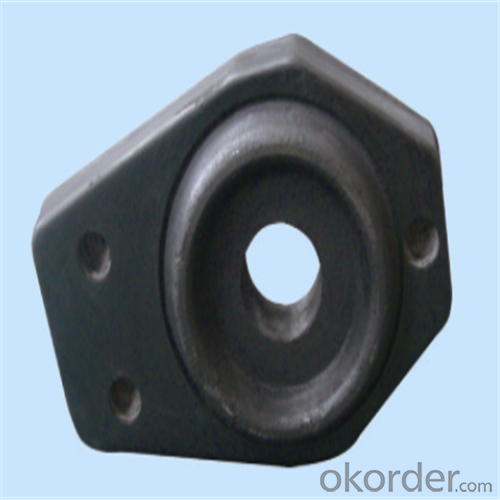
| Al-Zr-C & Al-C Material | ||||||
| Al2O3 | C | ZrO2 | Apparent porosity | Bulk density | C.C.S | |
| (% minm) | (% minm) | (% minm) | (% max) | (gm./cc minm) | (MPa minm) | |
| Inner side (Working face) | 85 | 3 | 4 | 7 | 3.1 | 120 |
| Outside | 90 | 3 | 0 | 9 | 3 | |
Using the raw materials of tabular alumina, zirconia-corundum, carbon and other high-grade additives, after sintering to obtain characteristics of oxidation resistance, scour strength, erosion resistance, thermal shock resistance, shape stable and long service life, made our products the preferred materials for the large and medium-sized steel ladle, refining ladle, series of alloy steel ladle, and tundish. Our high performance sintering sliding gates include alumina carbon , Al2O3-ZrO2-C, etc, can meet the needs of different steel grade.
Other Products
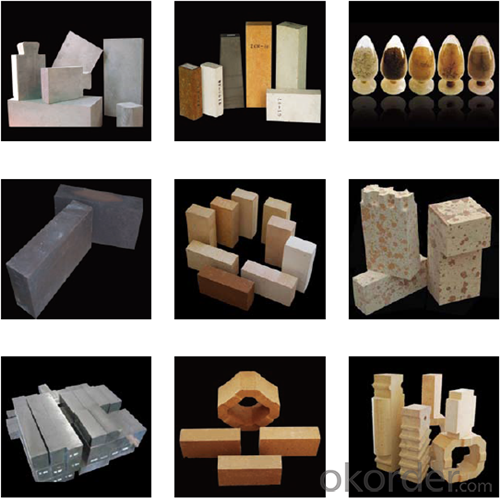
About us

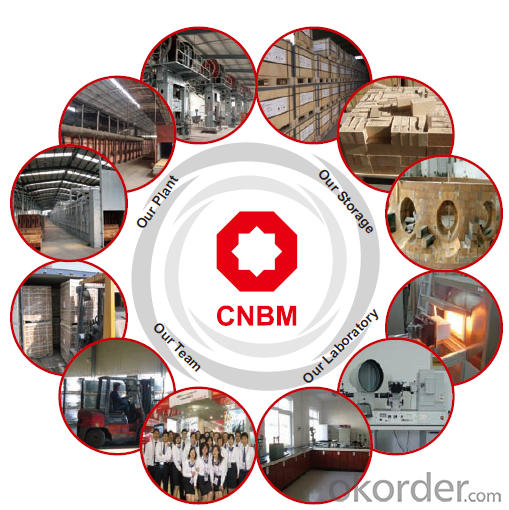
Sample is on your request.
Welcome to visit our factory~
- Q:How do monolithic refractories withstand mechanical stress in the iron and steel industry?
- Monolithic refractories are designed to withstand mechanical stress in the iron and steel industry through their unique composition and properties. These refractories are made up of a single, uniform structure, as opposed to traditional brick-like refractories that consist of multiple pieces. This monolithic structure provides several advantages in terms of mechanical stress resistance. Firstly, monolithic refractories possess a higher strength and density compared to traditional refractories. This allows them to better withstand the mechanical forces exerted during various processes in the iron and steel industry, such as the movement of molten metal, the impact of scrap materials, or the pressure from gases and liquids. Their superior strength and density help prevent cracking, deformation, or failure under these stress conditions. Additionally, monolithic refractories offer excellent thermal shock resistance, which is crucial in the iron and steel industry. The rapid heating and cooling cycles experienced in processes like steelmaking or iron casting can cause thermal stress on refractories. However, the monolithic structure of these refractories allows for better thermal conductivity and expansion, reducing the risk of thermal shock damage. This ability to withstand thermal stress contributes to their overall mechanical stress resistance. Moreover, monolithic refractories can be customized and applied on-site, providing a seamless lining that eliminates joints or weak spots. This seamless application ensures a more uniform distribution of stress and prevents the formation of cracks or gaps that could weaken the refractory lining. By eliminating these vulnerabilities, monolithic refractories enhance their ability to resist mechanical stress in the demanding conditions of the iron and steel industry. In conclusion, monolithic refractories withstand mechanical stress in the iron and steel industry through their high strength and density, superior thermal shock resistance, and seamless application. These properties enable them to endure the intense mechanical forces encountered during various processes, ensuring the longevity and efficiency of refractory linings in this demanding industry.
- Q:How are monolithic refractories installed in iron and steel production processes?
- The installation of monolithic refractories in iron and steel production processes necessitates various methods depending on the specific application and requirements. The installation process typically encompasses the subsequent steps: 1. Surface Preparation: Prior to installing monolithic refractories, it is imperative to adequately prepare the surface where they will be applied. This involves cleansing and eliminating any loose materials, dust, or contaminants from the substrate. 2. Mixing: Monolithic refractories comprise diverse materials, including aggregates, binders, and additives. These constituents are blended in specific proportions to attain the desired properties and consistency. The mixing process can be executed manually or using mechanical mixers. 3. Application: Various techniques exist for applying monolithic refractories, such as gunning, casting, ramming, and troweling. The chosen method is contingent upon factors such as the structure's shape, accessibility, and required thickness. - Gunning: This technique entails utilizing a gunning machine to spray the refractory material onto the surface. It is frequently employed for repairing or patching existing linings or for swift installation in hard-to-reach areas. - Casting: In casting, the refractory material is poured into molds or forms and allowed to solidify and harden. This method is suitable for fabricating intricate shapes and large-sized components. - Ramming: Ramming involves manually or mechanically compacting the refractory material into a mold or form using a ramming tool. This approach is commonly employed for lining induction furnaces, ladles, and other equipment. - Troweling: Troweling is a manual method wherein the refractory material is applied and smoothed using a trowel. It is frequently utilized for minor repairs or touch-ups. 4. Curing: Subsequent to the application of the refractory material, curing is necessary to attain its optimal strength and performance. Curing involves allowing the material to dry and harden at a controlled temperature and humidity for a specified duration. This step is crucial to ensure the monolithic refractory lining's long-term durability and resistance. In conclusion, the installation of monolithic refractories in iron and steel production processes necessitates meticulous preparation, proper mixing, and the appropriate application technique. It is imperative to adhere to manufacturer guidelines and industry best practices to ensure a successful installation that fulfills the specific requirements of the production process.
- Q:What are the typical applications of monolithic refractories in the iron and steel industry?
- Monolithic refractories find several typical applications in the iron and steel industry. These include lining electric arc furnaces, ladles, tundishes, and various other equipment used in the production of iron and steel. Monolithic refractories are also commonly used for repairing and maintaining the linings of these equipment. Their high thermal conductivity, excellent resistance to thermal shock, and ability to withstand extreme temperatures make them ideal for these applications in the iron and steel industry.
- Q:Can monolithic refractories be used for the lining of reheating furnaces and walking beam furnaces?
- Yes, monolithic refractories can be used for the lining of reheating furnaces and walking beam furnaces. Monolithic refractories are a type of refractory material that is characterized by its ability to be cast or gunned into place, rather than being made up of individual bricks or precast shapes. This makes them highly versatile and adaptable for various furnace applications, including reheating furnaces and walking beam furnaces. Reheating furnaces are used to heat metal products to a specific temperature before further processing, such as rolling or forging. The lining of these furnaces is subjected to high temperatures, thermal cycling, and mechanical stress. Monolithic refractories are well-suited for these conditions, as they have excellent thermal shock resistance and can withstand rapid temperature changes without cracking or spalling. Walking beam furnaces are used in the steel industry for the continuous heating and transport of steel slabs or billets. These furnaces require a lining material that can withstand the abrasion and mechanical stress caused by the movement of the material. Monolithic refractories with high abrasion resistance and good mechanical strength are ideal for the lining of walking beam furnaces. Additionally, monolithic refractories offer other advantages such as easy installation, reduced downtime for repairs, and improved energy efficiency. They can be tailored to specific furnace designs and can be easily repaired or replaced when necessary. In conclusion, monolithic refractories are a suitable choice for the lining of reheating furnaces and walking beam furnaces due to their ability to withstand high temperatures, thermal cycling, mechanical stress, and abrasion. Their versatility, ease of installation, and repair make them a preferred option for these furnace applications.
- Q:How do monolithic refractories improve the efficiency of ladle and tundish purging furnaces?
- There are several ways in which monolithic refractories play a crucial role in enhancing the efficiency of ladle and tundish purging furnaces. To begin with, monolithic refractories possess outstanding thermal insulation properties, enabling them to retain heat within the furnace and minimize heat loss to the surroundings. This results in the furnaces being able to operate at higher temperatures, leading to improved efficiency. The higher temperatures facilitate better steel refining, faster heating and purging of the ladle and tundish, and overall increased productivity. Furthermore, monolithic refractories offer superior resistance to thermal shock. The continuous flow of molten metal in purging furnaces, particularly in ladles and tundishes, subjects the refractories to rapid heating and cooling cycles. Traditional refractories may crack or fail under such thermal cycling, resulting in reduced efficiency and additional downtime for repairs. However, monolithic refractories can withstand these extreme temperature changes, ensuring uninterrupted operation and minimizing the need for frequent maintenance. In addition, monolithic refractories exhibit excellent resistance to chemical attacks from molten metals and slag. During the purging process, ladles and tundishes come into contact with aggressive materials that can erode the refractory lining. Monolithic refractories are specifically designed to endure these harsh environments, preventing erosion and prolonging the lifespan of the furnaces. This resistance to chemical attacks not only enhances efficiency by minimizing refractory wear but also guarantees the production of high-quality steel with reduced impurities. Lastly, monolithic refractories offer great versatility in terms of installation and repair. Unlike traditional refractories that necessitate complex bricklaying techniques, monolithic refractories can be easily shaped and installed, enabling faster and more efficient lining construction. Additionally, monolithic refractories can be effortlessly repaired or patched, reducing downtime and ensuring continuous operation of the furnace. In conclusion, monolithic refractories significantly enhance the efficiency of ladle and tundish purging furnaces through their excellent thermal insulation, resistance to thermal shock and chemical attacks, as well as ease of installation and repair. These properties enable higher operating temperatures, reduced heat loss, increased productivity, and extended furnace lifespan, ultimately improving the overall efficiency and performance of the steelmaking process.
- Q:How do monolithic refractories respond to changes in thermal conditions?
- Monolithic refractories have the ability to withstand and adapt to changes in thermal conditions. They have a high thermal shock resistance, meaning they can handle rapid changes in temperature without cracking or breaking. Additionally, they exhibit good thermal conductivity, allowing them to efficiently conduct and distribute heat. Overall, monolithic refractories demonstrate a stable and reliable response to changes in thermal conditions.
- Q:How do monolithic refractories handle thermal expansion and contraction?
- Monolithic refractories are designed to handle the challenges of thermal expansion and contraction. These materials are composed of a single solid structure, as opposed to the traditional brick or tile forms of refractories. This unique composition allows monolithic refractories to better accommodate the thermal stresses associated with temperature changes. One way that monolithic refractories handle thermal expansion and contraction is through their ability to withstand high temperatures. These materials are typically engineered to have a high melting point, allowing them to maintain their structural integrity even under extreme heat conditions. This property helps to prevent the refractory from cracking or disintegrating due to thermal expansion. In addition, monolithic refractories often contain a binder or bonding agent that helps to hold the refractory particles together. This binder can be formulated to have a certain degree of flexibility, allowing the material to expand and contract without cracking or breaking. This flexibility helps to absorb the stresses caused by thermal expansion and contraction, ensuring the longevity and performance of the refractory. Furthermore, monolithic refractories can be applied in a way that allows for expansion and contraction. These materials can be installed with joints or gaps between sections, which can accommodate the movement caused by temperature changes. This technique, known as joint design or expansion joint systems, allows the refractory to expand and contract without causing damage to the overall structure. Overall, monolithic refractories are designed to handle thermal expansion and contraction by withstanding high temperatures, incorporating flexible binders, and using joint design techniques. These properties enable them to maintain their structural integrity and performance in extreme heat conditions, making them a reliable choice for applications that require resistance to thermal stress.
- Q:How do monolithic refractories contribute to the overall safety of iron and steel operations?
- Monolithic refractories play a crucial role in ensuring the overall safety of iron and steel operations by providing several important benefits. Firstly, monolithic refractories are known for their high thermal insulation properties, which means they can effectively withstand extreme temperatures and prevent heat loss. This is particularly important in iron and steel operations, where high temperatures are involved in various processes such as melting, casting, and heat treatment. By minimizing heat loss, monolithic refractories help in maintaining a stable temperature environment, reducing the risk of accidents and ensuring the safety of personnel. Secondly, monolithic refractories offer excellent resistance to chemical attacks. In iron and steel operations, various chemicals and gases are present that can corrode and deteriorate the lining of furnaces, ladles, and other equipment. By providing a protective barrier, monolithic refractories prevent the penetration of these corrosive substances, thus extending the lifespan of the equipment and reducing the likelihood of failures or leaks that could pose safety hazards. Additionally, monolithic refractories are known for their structural integrity and high mechanical strength. In iron and steel operations, heavy loads and stresses are common, especially during the handling and movement of molten metal and raw materials. Monolithic refractories can withstand these stresses without cracking or collapsing, ensuring the structural stability of the equipment and minimizing the risk of accidents or equipment failure. Furthermore, monolithic refractories offer excellent thermal shock resistance. During iron and steel operations, sudden temperature changes can occur due to the introduction of cold materials or liquids into hot equipment. This thermal shock can cause cracking and spalling of the refractory lining, which can compromise the safety and efficiency of the operation. Monolithic refractories, with their ability to withstand thermal shock, help in minimizing the risk of unexpected failures and maintaining the overall safety of the operation. In conclusion, monolithic refractories contribute significantly to the overall safety of iron and steel operations by providing high thermal insulation, chemical resistance, structural integrity, and thermal shock resistance. By ensuring a stable temperature environment, protecting against chemical attacks, withstanding heavy loads, and resisting thermal shock, monolithic refractories help in preventing accidents, equipment failures, and potential hazards, thus creating a safer working environment for personnel in the iron and steel industry.
- Q:How do monolithic refractories resist corrosion and erosion in the iron and steel industry?
- Monolithic refractories resist corrosion and erosion in the iron and steel industry through their unique composition and properties. They are made of a single material structure, which eliminates joints and seams, reducing the likelihood of corrosion. Additionally, these refractories are designed to have high density and low porosity, making them resistant to penetration by corrosive elements. The refractories also have excellent thermal shock resistance and mechanical strength, which helps them withstand the harsh conditions of the iron and steel industry. Overall, the combination of their composition, density, and strength enables monolithic refractories to effectively resist corrosion and erosion in this industry.
- Q:What are the key properties of monolithic refractories?
- Monolithic refractories are a type of refractory material that are unshaped or shapeless, meaning they do not have a definite form like bricks or tiles. Instead, they are typically composed of a mixture of aggregates, binders, and additives that can be easily molded and installed in various industrial applications. The key properties of monolithic refractories are: 1. High temperature resistance: Monolithic refractories are designed to withstand extremely high temperatures, making them suitable for applications in industries such as steel, cement, glass, and petrochemicals. They can maintain their strength and structural integrity even at temperatures exceeding 3000 degrees Fahrenheit. 2. Thermal shock resistance: Monolithic refractories have the ability to resist thermal shock, which is the sudden change in temperature that can cause cracking or damage to the refractory. This property is essential in environments where rapid heating or cooling occurs, such as in furnaces or kilns. 3. Chemical resistance: Monolithic refractories exhibit excellent resistance to chemical attack and corrosion from molten metals, slag, gases, and other harsh substances. This makes them ideal for use in environments where they come into contact with acidic or alkaline materials. 4. Low porosity: Monolithic refractories have low porosity, which means they have a high density and are less permeable to gases and liquids. This property helps to prevent the penetration of molten metals or corrosive substances into the refractory, ensuring its longevity and performance. 5. Easy installation and repair: Unlike traditional refractory materials like bricks, monolithic refractories can be easily molded and installed in various shapes and sizes. They can be applied by spraying, casting, or ramming techniques, allowing for faster installation and reduced downtime. Additionally, they can be easily repaired or patched if any damage occurs. 6. Good mechanical strength: Monolithic refractories possess adequate mechanical strength to withstand the stresses and pressures encountered during their service life. This ensures their structural integrity, even under high load conditions. Overall, the key properties of monolithic refractories make them a versatile and reliable choice for a wide range of industrial applications where high temperature resistance, chemical resistance, and thermal shock resistance are required.
1. Manufacturer Overview |
|
|---|---|
| Location | |
| Year Established | |
| Annual Output Value | |
| Main Markets | |
| Company Certifications | |
2. Manufacturer Certificates |
|
|---|---|
| a) Certification Name | |
| Range | |
| Reference | |
| Validity Period | |
3. Manufacturer Capability |
|
|---|---|
| a)Trade Capacity | |
| Nearest Port | |
| Export Percentage | |
| No.of Employees in Trade Department | |
| Language Spoken: | |
| b)Factory Information | |
| Factory Size: | |
| No. of Production Lines | |
| Contract Manufacturing | |
| Product Price Range | |
Send your message to us
High Performance Ladle Sliding Gate for Steel Industry 2015
- Loading Port:
- Shanghai
- Payment Terms:
- TT OR LC
- Min Order Qty:
- 100 pc
- Supply Capability:
- 1000 pc/month
OKorder Service Pledge
OKorder Financial Service
Similar products
New products
Hot products
Related keywords
